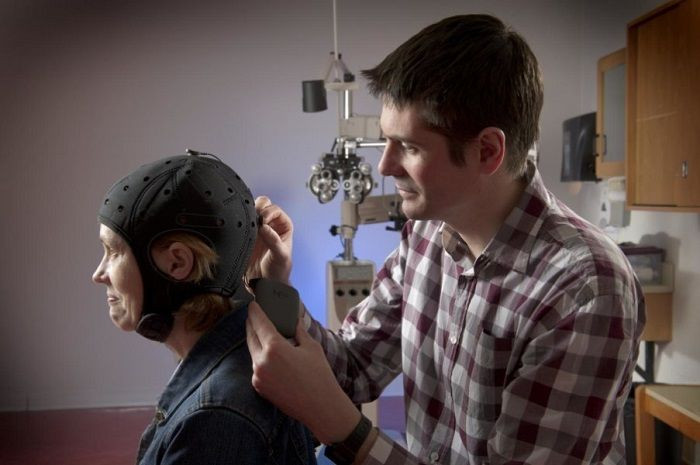Patients With Lazy Eye May Fix Vision With Low-Voltage Electric Currents

Amblyopia, also referred to as lazy eye, is the most common cause of vision impairment among United States children and adults, with 2 to 3 percent of the population affected. People with this vision disorder are prescribed eyeglasses or an eye patch, which is usually worn over the stronger eye to strengthen the weaker one; however, these treatments are most effective when administered to patients at an early age.
New research published in the journal Scientific Reports holds a promising future for those whose lazy eye — a loss of vision that originates in the brain — persists into adulthood. Researchers from the University of Waterloo in Canada and Sun Yat-Sen University in China have demonstrated that low-voltage electric currents can temporarily improve sight in adult patients with lazy eye, a condition previously thought to be treatable only in childhood because kids are in a critical development period in which their brains are highly responsive, according to the study.
"Until fairly recently, the prevailing view was that if adults couldn't develop amblyopia, they couldn't be treated for it," Waterloo vision scientist Ben Thompson said in a statement. "This was the same for anyone with brain-based vision problems — they're often told there's nothing that can be done about their vision loss."
Thompson and his colleagues conducted a series of experiments to demonstrate and verify the efficacy of a non-invasive mild electrical stimulation — often described as a slight tingling on the head — in treating lazy eye. For the study, researchers recruited 21 adults with the vision development disorder and 27 adults with normal vision. Each participant were exposed to 20 minutes of transcranial direct current stimulation (tDCS) applied to the surface of the head, directly over the primary visual cortex.
The low voltages temporarily increased the response of the brain’s primary visual cortex to visual information from the lazy eye as well as the patients’ ability to see low contrast patterns. The treatment even improved vision in participants who didn’t have amblyopia.
"It's a long held view that adults can't be treated for lazy eye because their brains no longer have the capacity to change," Thompson said. "We demonstrate here that adults do have the capacity, especially when it comes to vision."
Past research has suggested that playing Tetris or watching movies can be used as therapy to improve vision in those with a lazy eye. Studies also have linked methods such as tDCS to enhanced neuroplasticity, or the brain's natural ability to rewire and reorganize itself; and have shown that electrical stimulation can boost cognitive function and alleviate depression.
Although the findings are promising, more research is needed. The next step for researchers is to conduct clinical trials to further prove the efficacy of this treatment.
“Our ultimate goal is to develop an evidence-based treatment that patients can receive right in their eye doctor’s office,” Thompson explained. “We expect there are other primary visual cortex problems that we may be able to address with this method.”
Source: Ding Z, Li J, Spiegel D, et al. The Effect of Transcranial Direct Current Stimulation on Contrast Sensitivity and Visual Evoked Potential Amplitude in Adults with Amblyopia. Scientific Reports. 2016.
Published by Medicaldaily.com



























